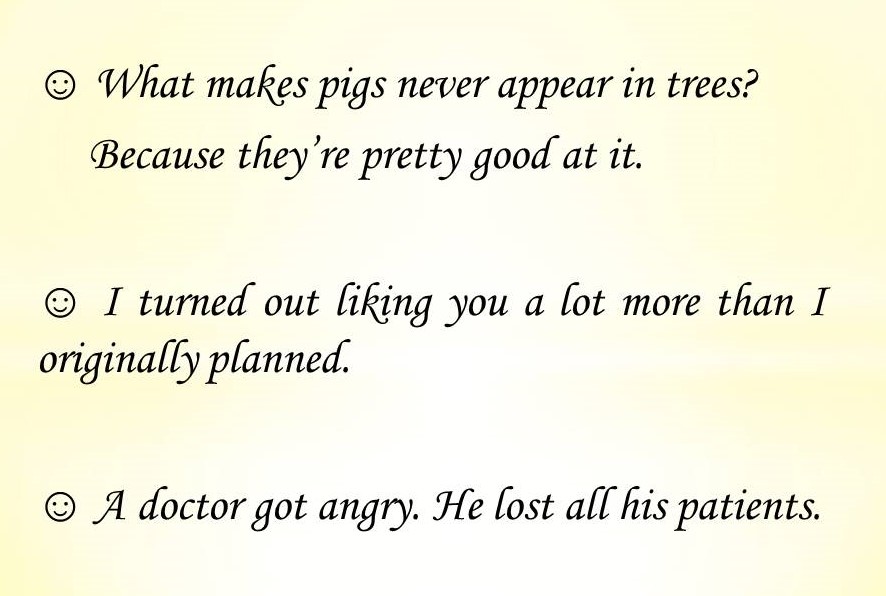
Humor is a universal language, connecting people through laughter and shared amusement. While various humor styles exist, dry humor stands out for its unique approach to comedy. It’s a subtle art form that relies on understated wit, irony, and sarcasm to elicit chuckles rather than guffaws. This article delves into the intricacies of dry humor, exploring its defining characteristics, common examples, and the enduring appeal of its ironic twist.
This exploration will begin by defining dry humor and outlining its key features. We’ll then examine various examples of dry humor in action, showcasing its versatility across different contexts. Furthermore, we’ll delve into the psychology behind the appeal of irony and sarcasm, understanding why these elements resonate with audiences. Finally, we’ll conclude by summarizing the enduring power of dry humor in our comedic landscape.
Defining Dry Humor
What’s a dry sense of humour, often referred to as “dry wit,” is characterized by its subtle and understated nature. Unlike slapstick or boisterous comedy, dry humor relies on clever wordplay, unexpected twists, and a delivery that often appears deadpan or serious. The humor arises from the incongruity between the words spoken and the intended meaning, leaving the audience to decipher the joke’s absurdity or sarcasm.
A key element of dry sense of humour is its reliance on irony. Irony involves a discrepancy between what is said and what is meant, often creating a humorous effect through unexpected twists or contradictions. For instance, stating “Fantastic weather we’re having” during a torrential downpour exemplifies ironic humor.
Another defining characteristic is the use of sarcasm, which involves using words to convey the opposite of their literal meaning. Sarcasm can be subtle and nuanced, requiring the listener to recognize the speaker’s intent behind the seemingly straightforward statement.
Characteristics of Dry Wit
Dry humor often exhibits several distinct characteristics that contribute to its unique appeal:
- Understatement: A hallmark of dry wit is its tendency towards understatement. Instead of exaggerating for comedic effect, dry humorists often deliver punchlines with a matter-of-fact tone, leaving the audience to fill in the humorous gaps.
Deadpan Delivery: The delivery of dry humor is typically characterized by a straight face and minimal emotional expression. This “deadpan” approach adds to the humor’s absurdity, as the seriousness of the delivery contrasts sharply with the often ironic or sarcastic content.
Wordplay and Puns: Dry humor frequently employs clever wordplay, puns, and double entendres to create unexpected twists and humorous ambiguities. These linguistic nuances require a certain level of attentiveness from the audience, rewarding those who appreciate the subtle wit.
- Self-Deprecation: Many dry humorists incorporate self-deprecating humor into their routines, poking fun at their own flaws or shortcomings with a lighthearted touch. This vulnerability can make the humor more relatable and endearing to audiences.
Examples of Dry Humor
Dry humor manifests itself in various forms across different mediums:
- Stand-up Comedy: Comedians like Mitch Hedberg and Steven Wright are renowned for their mastery of dry wit, delivering punchlines with a deadpan expression and unexpected twists that leave audiences chuckling.
Literature: Authors such as Jane Austen and P.G. Wodehouse are celebrated for their use of dry humor in their novels. Their characters often engage in witty banter and ironic observations, creating humorous situations through subtle wordplay and social commentary.
Film and Television: Movies like “The Big Lebowski” and “Monty Python and the Holy Grail” showcase dry humor’s effectiveness in cinematic storytelling. The deadpan delivery of lines and absurd scenarios create a unique brand of comedic brilliance.
- Everyday Conversations: Dry humor can even be found in everyday interactions. A simple statement like “Oh, that’s just great” delivered with a sarcastic tone can effectively convey amusement or frustration in a subtle way.
The Appeal of Irony
Irony holds a special place in the realm of humor because it plays on our expectations and creates a sense of surprise. When something unexpected happens or is said, it disrupts our assumptions and triggers laughter as we try to make sense of the incongruity.
The appeal of irony lies in its ability to expose hypocrisy, highlight contradictions, and offer a witty commentary on social norms. It allows us to laugh at ourselves and the absurdities of life while simultaneously engaging with deeper themes and ideas.
Understanding Sarcasm
Sarcasm is a more pointed form of irony that involves using words to convey the opposite of their literal meaning. It often relies on tone of voice, facial expressions, and context clues to signal the speaker’s true intent.
Recognizing sarcasm requires a certain level of social intelligence and understanding of the speaker’s intentions. It can be a powerful tool for humor, but it can also be easily misinterpreted, leading to misunderstandings or offense if not delivered carefully.
Conclusion
Dry humor, with its subtle wit, irony, and deadpan delivery, offers a unique and enduring form of comedy. Its appeal lies in its ability to challenge our expectations, expose hypocrisy, and make us laugh at the absurdities of life. Whether it’s a stand-up comedian’s punchline or a witty remark in everyday conversation, dry humor continues to captivate audiences with its cleverness and understated charm.
